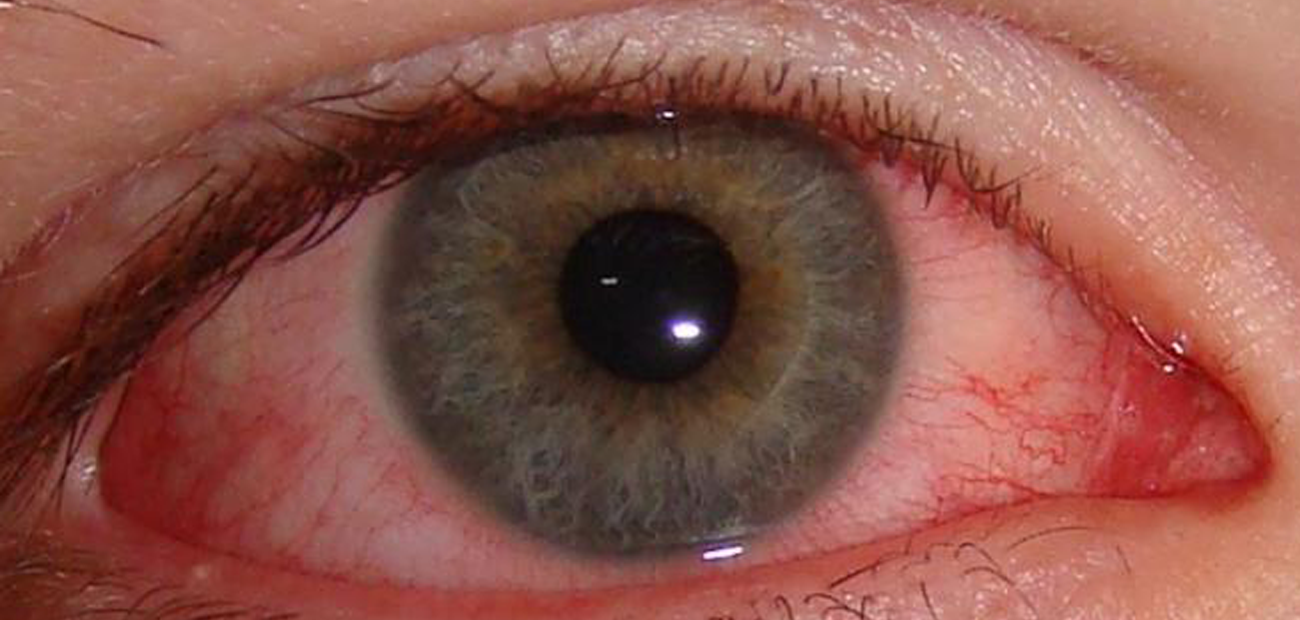Here are just a few possibility of the causative agents of Conjunctivitis and only a trained professional can diagnose and treat accordingly.
- Bacterial Conjuctivitis
- Bacterial Corneal Ulcer
- Viral Conjuctivitis
- Fungal Keratitis
- Allergic Conjunctivitis
- Uveitis/Iritis (Inflammation of the Uvea/Iris)
- Keratitis (Inflammation of the cornea)
- Contact Lens Associated Red Eye (CLARE)
- Eye irritation
- Dry Eyes
- Chemical Burn/Abrasion
- Cornea/Conjunctival Foreign Body
- Corneal Abrasion
- Eye Trauma
- Intra-Ocular Tumor
- Others
WHAT IS CONJUNCTIVITIS? – PINK EYE
Conjunctivitis is most commonly referred to as red or ‘pink’ eye. The conjunctiva, which contains tiny blood vessels, produces mucus to coat and lubricate the surface of your eye. When the conjunctiva becomes irritated or inflamed, the blood vessels become larger and more prominent, making your eye appear red. Conjunctivitis may occur in one or both eyes.
SYMPTOMS
- Inflammation of the eye
- Increased tearing
- Soreness of the eye
- Foreign body sensation
- Itchiness of the eye
- Hazy or blurred vision due to mucous or pus
- Excess mucous (pus)
- Crusting of eyelashes in the morning
WHAT CAUSES CONJUNCTIVITIS?
Many different sources of eye irritation can cause conjunctivitis. The most common are:
- Infections (Viral and Bacterial)
- Allergies
- Environmental Irritants
Viral infection is the most common cause of conjunctivitis. This same virus produces the familiar red and watery eyes, sore throat, and runny nose of a common cold. Symptoms of conjunctivitis can last from one to two weeks and then will disappear on their own. Discomfort, however, can be alleviated with warm compresses applied to the eyes. Bacterial infections, such as staphylococcus or streptococcus, cause a type of red eye that produces considerable amounts of pus. Some bacterial infections, however, are more chronic and may produce little or no discharge except for some mild crusting of the eyelashes in the morning. Antibiotic eye drops are typically used to treat bacterial conjunctivitis. Infectious conjunctivitis, whether bacterial or viral, can be quite contagious. Practicing good hygiene can help prevent the spread of conjunctivitis if you are infected. You should:
- Avoid re-using handkerchiefs and towels to wipe your face and eyes
- Wash your hands frequently
- Keep your hands away from your eyes
- Replace your eye cosmetics regularly “do not share with other people”
- Properly clean your contact lenses
Allergic conjunctivitis is not infectious or contagious. It occurs when the body is exposed to materials that cause an allergic reaction, such as pollen or dander, and is often seasonal. Symptoms include redness, itching and/or burning eyes, tearing, enlarged vessels in the sclera (white part of the eye), and puffy eyelids. Treatment often includes applying cool compresses to the eyes and taking antihistamines.
Environmental irritants, such as smoke or fumes, may also cause conjunctivitis. The symptoms are usually similar to those of allergic conjunctivitis.
WHAT ARE OTHER CAUSES OF CONJUNCTIVITIS?
Generally, conjunctivitis is easily treated. However, if symptoms of conjunctivitis persist for an extended period of time after treatment, you should have your eyes examined by your doctor, as these symptoms may indicate a more serious eye problem. There are several eye diseases that cause red eyes, some of which can lead to blindness unless diagnosed and treated.



